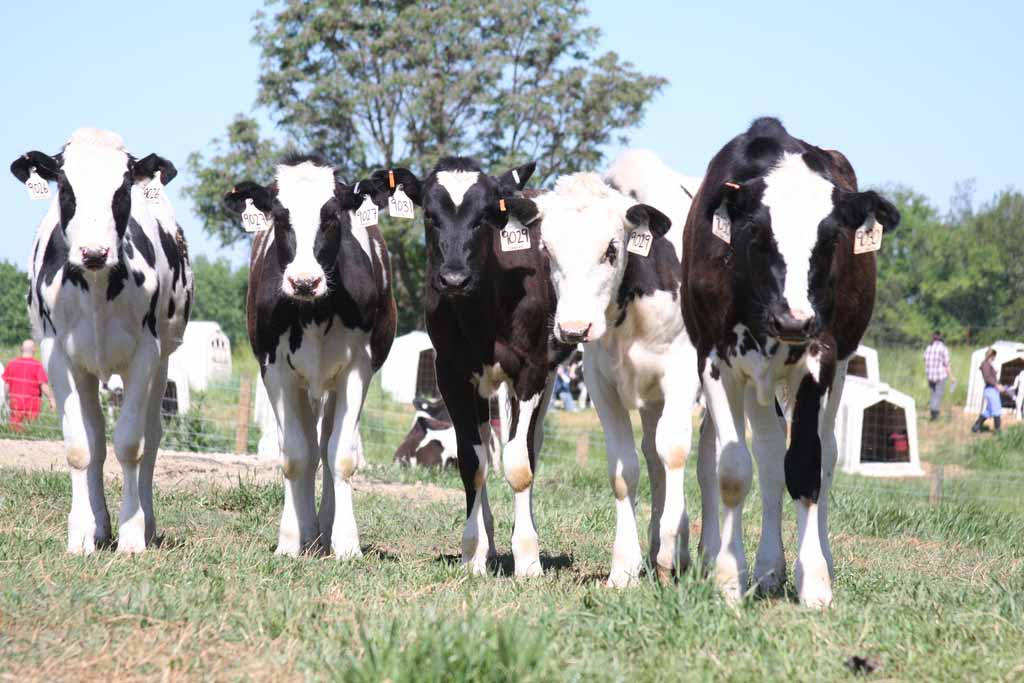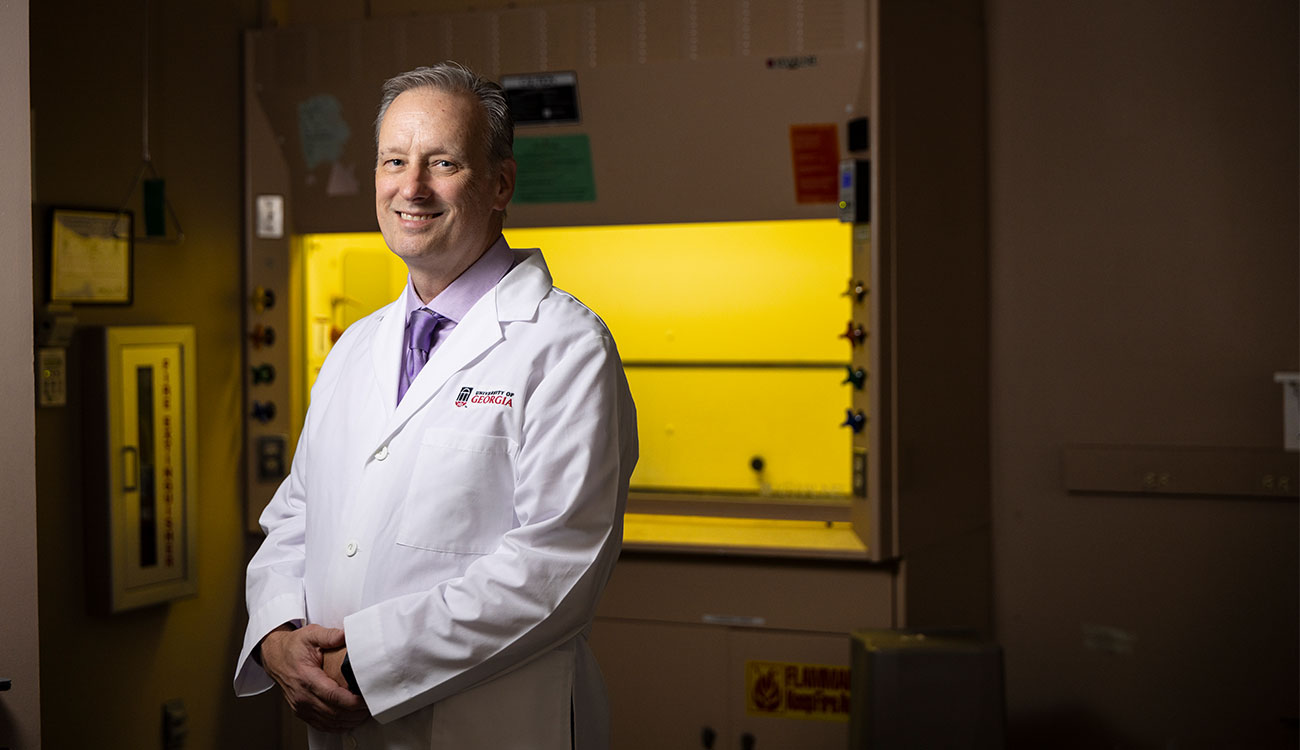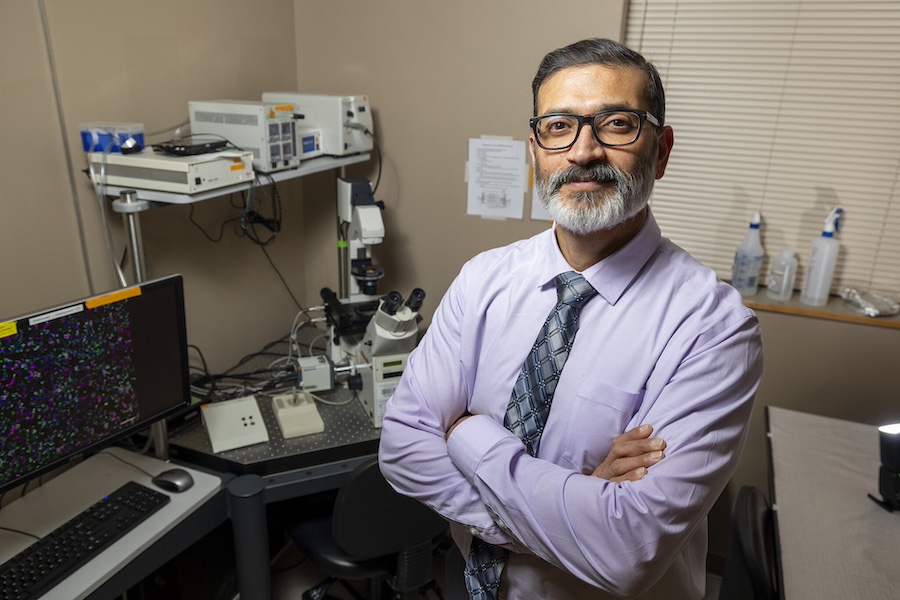A University of Georgia researcher has found that the diet of grass-fed dairy cows can make them produce more greenhouse gas than their grain-fed counterparts when emissions were measured per gallon of milk.
Mark Risse, who researches the impacts of climate change on agriculture at the UGA College of Agricultural and Environmental Sciences, recently compared the greenhouse gas emissions of a confined, grain fed dairy to a rotational grazing dairy that mainly allowed cattle to graze on a forage-based diet.
Carbon footprints differ depending on the scope of the study
Risse’s study, which was published in the journal Agricultural Systems in January, looked at the carbon footprint of two dairy operations in Georgia. Risse and his graduate student Jeff Belflower took into account everything from the power used to run the dairies to the greenhouse gas produced by growing feed at the confined dairy to the gases produced by the digestive processes of both sets of cows.
“It is extremely important that you look at the boundaries of the system and the assumptions made whenever you are trying to compare products based on their carbon footprint,” Risse said.
Less greenhouse gas over all, but more per gallon of milk
In the end, the grass-fed dairy produced slightly less greenhouse gas in the same period of time as the confined, grain-fed dairy. However, during that set time period, the confined dairy cows produced more milk, and the amount of greenhouse gas produced per gallon of milk was lower.
The confined dairy created the bulk of its greenhouse gas emissions through the intensive cultivation of grain needed to feed the cows and through management of the cow’s manure.
The grass-fed dairy’s largest source of greenhouse gas was the cows themselves. Their diet of leafy greens required them to expel more gases during digestion than the grain-fed cows.
“I was surprised to learn that cows eating grass have higher emissions than grain-fed cattle,” said Risse, who raises grass-fed beef cattle on his farm in Oconee County. “I dug into this a little deeper and found several other studies that document higher emissions on a grass diet.”
No matter what cows are fed, the methane and carbon dioxide they produce during digestion accounts for the largest source of greenhouse gas emissions in the beef and dairy cattle industries.
About 70 percent of the total greenhouse gas emissions produced by livestock and poultry production comes from the animal’s natural digestive process. That gas accounts for about 25 percent of the total greenhouse gasses emitted by agricultural production activities.
This is true even when you look at the transportation needed to move cows from place to place, the fertilizer and tractor power it takes to keep cows fed and the electricity and heat it takes to keep a farm running, Risse said.
For the past two years, Risse has researched the links between climate change and agriculture and the impacts that climate change may have on how food is grown. He’s found that some things the public generally associates with green living, like eating a mostly local diet and cutting down on meat consumption, can lower a person’s carbon footprint.
Other practices, like eating organically raised meat, grass-fed beef or cage-free chickens, don’t necessarily reduce the typical omnivore’s carbon footprint much because so much meat-related greenhouse gas comes from the animal’s natural processes, regardless how they are raised./p>
Agriculture’s carbon footprint is surprisingly small when compared to other manmade sources
While a person can reduce their carbon footprint by drastically limiting the amount of meat and dairy they consume, they would make a much larger impact by changing their driving habits or limiting the amount of energy they use in their homes, he said. Agriculture’s contribution to the total amount of carbon dioxide and greenhouse gas pumped into the atmosphere is fairly small compared to the amount of greenhouse gas emitted by industry and personal and commercial transportation.
The best research Risse has found shows that farming operations only cause 6.5 percent of the greenhouse gasses produced in the U.S. That percentage includes the gasses generated by the transportation of produce to market.
In addition to working to pinpoint impacts that agricultural systems have on climate change, he’s been working with farmers in Georgia and Florida to help find strategies for them cope with unpredictable weather that may be caused by climate change.
“We need to talk about climate change from the perspective of helping producers manage the changes,” Risse said. “If the climate’s going to change, and we can’t control those changes, then we better do our best at trying to predict those changes and help the producers adapt to those changes.
“Farmers are very versatile and have always had to deal with the weather. If we can give them a heads up to some of the things that they will need to adapt to, I think that they will adapt and develop improved systems for dealing with those changes.”
Additional UGA researchers on the study were John Bernard in the department of animal and dairy science, David Gattie in the department of biological and agricultural engineering and Dennis Hancock in the department of crop and soil sciences. Alan Rotz of the U.S. Department of Agriculture-Agricultural Research Service also contributed to the study.



